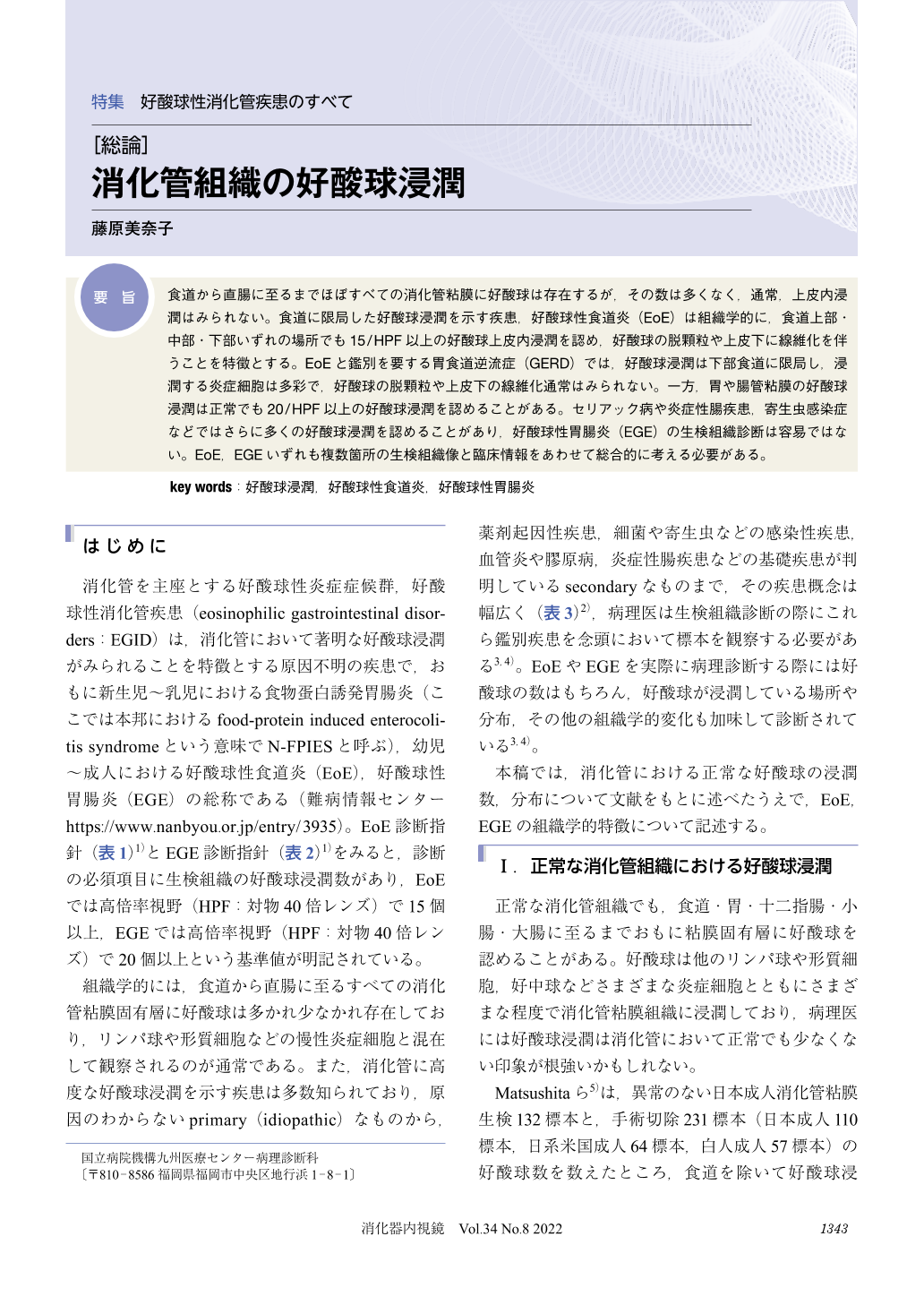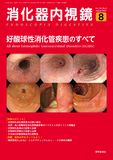Japanese
English
- 有料閲覧
- Abstract 文献概要
- 1ページ目 Look Inside
- 参考文献 Reference
要 旨
食道から直腸に至るまでほぼすべての消化管粘膜に好酸球は存在するが,その数は多くなく,通常,上皮内浸潤はみられない。食道に限局した好酸球浸潤を示す疾患,好酸球性食道炎(EoE)は組織学的に,食道上部・中部・下部いずれの場所でも15/HPF以上の好酸球上皮内浸潤を認め,好酸球の脱顆粒や上皮下に線維化を伴うことを特徴とする。EoEと鑑別を要する胃食道逆流症(GERD)では,好酸球浸潤は下部食道に限局し,浸潤する炎症細胞は多彩で,好酸球の脱顆粒や上皮下の線維化通常はみられない。一方,胃や腸管粘膜の好酸球浸潤は正常でも20/HPF以上の好酸球浸潤を認めることがある。セリアック病や炎症性腸疾患,寄生虫感染症などではさらに多くの好酸球浸潤を認めることがあり,好酸球性胃腸炎(EGE)の生検組織診断は容易ではない。EoE,EGEいずれも複数箇所の生検組織像と臨床情報をあわせて総合的に考える必要がある。
In almost all gastrointestinal mucosa, eosinophils are normally observed in the lamina propria, but eosinophilic intraepithelial infiltration is rarely observed in the normal state. The histological features of eosinophilic esophagitis (EoE) are eosinophilic intraepithelial infiltration greater than 15/HPF at the upper-, middle-, and lower-esophagus, eosinophilic degranulation, and subepithelial fibrosis. In gastroesophageal reflux disease (GERD), various inflammatory cells are infiltrated, and eosinophilic infiltration is limited to the lower esophagus. No epithelial desquamation or subepithelial fibrosis is observed in GERD. On the other hand, it is difficult to histologically characterize eosinophilic gastroenteritis (EGE), because eosinophilic infiltration more than 20/HPF is often seen in the normal gastrointestinal mucosa, and more eosinophiles are often infiltrated in celiac disease, inflammatory bowel disease, or parasitic infectious disease. Multiple biopsies and careful collection of clinical information are important for diagnosis of EoE and EGE.

© tokyo-igakusha.co.jp. All right reserved.


